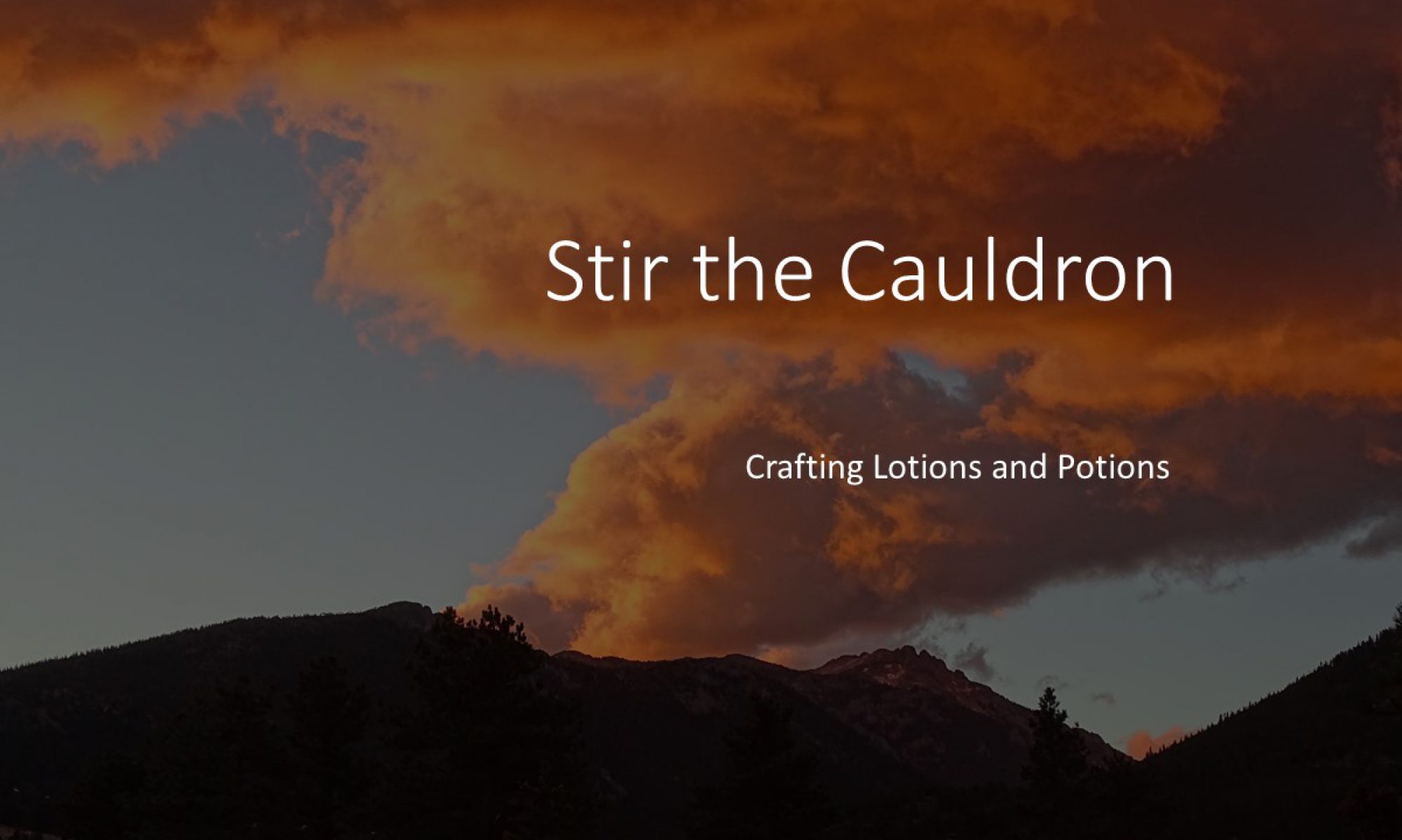Hand Cream #14 is the recipe that I use most. It is a rich, moisturising cream that is stable and keeps well. It’s a classic cold cream, based on proportions of oils, waxes and water-based ingredients that was first recorded by Galen (AD 129-99). Galen was physician to Emperor Marcus Aurelius of Rome, and surgeon to the roman gladiators.
The recipe for Hand Cream #14 includes essential oils. These serve two purposes. Most obviously, they provide fragrance. Less obviously, but perhaps more significantly, essential oils have preservative properties that improve the keeping qualities of the cream.
I have used different blends of essential oil to mark the changing seasons. Using pagan and druidic festivals gives me 8 names for seasonal preparations. I use five of my current range of seasonal essential oil blends in Hand Cream #14. (Yule, Imbolc, Ostara, Beltane, Litha.) Any blend of essential oils that can be used as a fragrance can be included in this recipe, provided they are listed with the final product so anyone using the cream can check for allergens.
The ingredients, equipment and method I use to make Hand Cream #14 are:
Oil Phase
-
- 150ml Sweet Almond Oil
- 75ml Coconut Oil
- 30g Beeswax
- 20g Shea Butter
- 7.5ml Lanolin
Water Phase
-
- 150ml Distilled Witch Hazel
- 75ml Aloe Vera Gel
Cool Down
-
- 7.5ml Vitamin E oil
- 20-30 drops of essential oils (see earlier in this page – third paragraph – for some ideas).
Equipment

- Two heatproof glass containers, one with a capacity of al least 500 ml and the second with a capacity of at least 250 ml. (I use 3 Pyrex jugs – one with a capacity of 1 litre for the oils and mixing, one with a capacity of 500 ml for the water phase ingredients, and another 500 ml jug for preheating the blender. Mason Jars are also suitable.)
- An electric oven capable of being set to a temperature of 60-70C, or a shallow pan wide enough to accept the glass containers and a kitchen stove electric hob or gas ring
- A hand blender or whisk, and something you can use to hold hot water to heat it
- Clean pots or jars for the hand cream
- Spatula(s)
- Scales
- Cloths or paper towels for cleanup.
Method
- Measure out your oil phase ingredients into the largest of your two glass containers, and measure out the water phase ingredients into the other glass container. (I tend to weigh my ingredients to the nearest gram. Although the density of the ingredients varies a little, for practical purposes you can assume that 1 ml weights 1 gram. For very small quantities of liquids I use a syringe designed for refilling inkjet printer cartridges.)
Put a stirrer into the container with the oils – a spatula or spoon. - Heat the ingredients until all the solid oils and waxes melt. Either;
- Put the containers into an electric oven set to about 70C, or;
- Put the containers in a shallow pan and surround them with water. Bring the water to the boil on a stove top and reduce the heat so the water simmers gently.
- Prepare the pots or jars that you will use to store your hand cream.
- When the solid oils and waxes have melted, take the containers out of the oven or off the stove. Stir the oils (remembering that the stirrer will be quite hot).
- Put your blender or whisk into a pot of hot water to preheat it.
- When you start to see the oils solidifying, put your blender or whisk in the container with them. Whisk or blend as you add the water phase ingredients, keeping use of the whisk or blender to a minimum.

- Briefly whisk or blend as the mixture cools. When it gets to around 40C (when the container will still be warm to touch but not too hot to hold comfortably) add the cool-down ingredients and whisk or blend briefly for the final time.
- Pour and scrape your cream into your pots or jars.
- Label the pots or jars and keep them in a refrigerator until you want to use your hand cream.
- Clean up with hot, soapy water. Lots of hot, soapy water.
